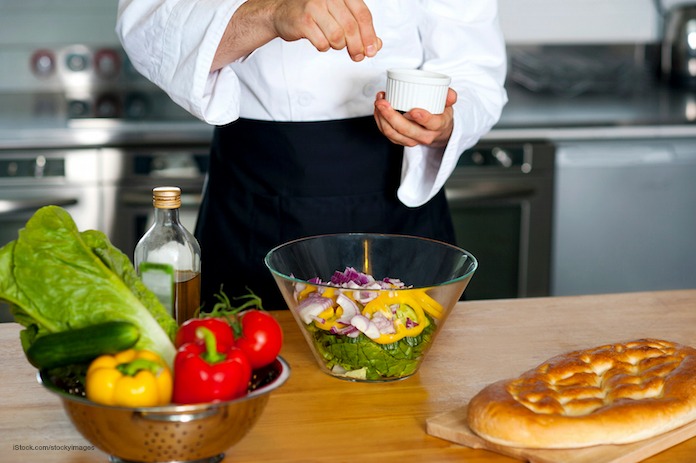A study published in the Journal of Nutrition Education and Behavior has found that many television cooking shows overlook safe food handling practices. These shows are an important resource for home cooks, but the poor food safety practices demonstrated on these programs may lead to poor practices and foodborne illness among consumers who watch them.

Researchers from the University of Massachusetts Amherst assessed food safety on television shows to discover whether they present positive or negative models.
There are 48,000,000 cases of foodborne illness every year in the United States. Of those cases, 128,000 people are hospitalized, and 3,000 people die. Illnesses can occur from recalled contaminated food and from improper food safety practices in retail kitchens, but many illnesses occur from food prepared at home.
Few home cooks adhere to food safety practices. And adherence to those practices has declined in recent years. Fewer consumers report washing their hands before handling food, cooking to required safe temperatures, or separating meat and poultry from ready-to-eat foods in 2011 than in 2008 or 2010. In addition, only 33% of consumers said they trusted the government for food safety information, but more than half trusted the media. Most, about 73%, get their food safety information from media. Twenty-two percent of those people use cooking shows as their primary source of information.
Researchers developed a 19 question survey, adapted from the Massachusetts Food Establishment Inspection Report. Safe food handling practices were measured, including uses of utensils and gloves, protection from contamination, and time and temperature control. The researchers also recorded whether or not food safety practices were mentioned during the program. A panel of experts watched 10 popular cooking shows during the evaluation.
Lead study author Dr. Nancy L. Cohen said, “the majority of practices rated were out of compliance or conformance with recommendations in at least 70% of episodes and food safety practices were mentioned in only three episodes. Only four practices were observed to be in compliance or conformance with recommendations in more than 50% of the episodes. For most behaviors observed, the percentage of shows in conformance with recommended practices was much lower than that seen in restaurant employees and consumers in general.”
Researchers could easily identify room for improvement. They said that shows should require food safety training for chefs and contestants, incorporate food safety as a judging criterion in competitions, and putting food safety information into scripts.
Cohen added, “there are many opportunities on cooking shows to educate the public regarding safe food handling practices and help reduce the incidence of foodborne illness. Similarly, nutrition and food safety educators could work with the media to produce shows that demonstrate positive food safety behaviors and educate consumers about food safety practices as they adopt recipes.”




